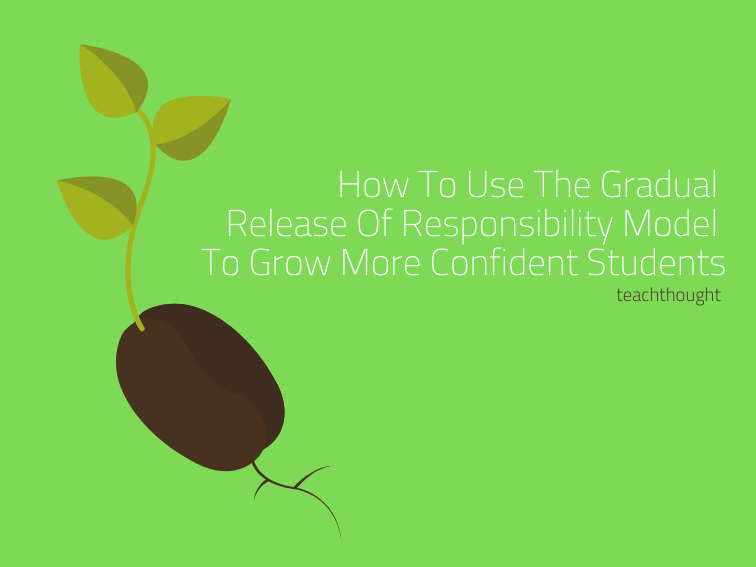
How To Use The Gradual Release Of Responsibility Model To Grow More Confident Students
by Terry Heick
Learning is a culture.
It starts there—with the students first as human beings needing to understand their environment. And it ends there—with students using what we give them back at home, in those physical and digital environments.
Even the practices that promote or undermine the learning process itself come are first and foremost human and cultural artifacts. Literacy, curiosity, self-efficacy, ambition, and other important agents of learning are born in the native environments of home.
Further, learning is ongoing, perishable, and alive–just like culture.
But what about your classroom? Can you promote a certain culture there strategically, or does it just happen, the seemingly random product of the student roster assignments mixed with your personality as a teacher?
And further, what is a ‘culture of learning,’ and can you create one yourself? The short answer is that a culture of learning is “a collection of thinking habits, beliefs about self, and collaborative workflows that result in sustained critical learning.” Or that’s how I think of it anyway.
Can you cause this to happen? Of course you can. Almost anything can be learned—and unlearned. It is simply a matter of identifying desired characteristics, and then using the gradual release of responsibility model, intentionally letting it happen.
Intentionally letting may seem like an oxymoron—well, it is an oxymoron. The idea here is to create the conditions conducive to some result—here, a culture of learning—and then getting out of the way. You can’t cause curiosity, enthusiasm, or affection.
But you can let them happen.
How To Use The Gradual Release Of Responsibility Model To Grow More Confident Students
1. Show them
Model the “thinking habits, beliefs about self, and collaborative workflows that result in sustained critical learning.” Demonstrate the think-alouds, reflective writing, metacognitive conversations, and other human practices and habits that lead to learning, and then reflect again on their impact. How they were successful. Where they fell short. What you might do next time.
To use the Gradual Release of Responsibility model, students need to see others using it and who better to model it but you?
2. Help them
The next step of the gradual release of responsibility model is to help students do what you showed them on their own. Put them in groups. Have them publish their thinking in writing or on a podcast. There are many ways students can make learning visible.
And in doing so, try to provide them soft cushions to land on when they fail. Offer strategies, coaching, and general support. Help them publish their thinking–the right bits at the right time with the right audience. Help them self-assess their performance. Help them create their own standards for their own work.
Require them to revisit old ideas, old writing, and old projects. At this stage, the big idea is to simply help them develop the autonomy you modeled in the first step. Autonomy is both a cause and effect of confidence and both are necessary in creating a culture of learning.
3. Let them
The final stage of promoting a culture of learning in your classroom is to simply get out of the way. Give them only just enough for them to take off on their own. A topic. A community. A project idea. An app. A problem (in their eyes) worth solving.
Consider the Combination Learning model–then let them show what they can do. And if they just sit there like bumps on a log, go back to step #1.
Developing confident students using the Gradual Release of Responsibility model requires, after showing and helping them, that you ‘let’ them. What you’re actually ‘letting’ them do depends, of course. A math problem, maker project, formal debate, reading test–whatever you’ve modeled for them and then helped them do. To create confidence in students, you have to show them that you trust them.
If they ‘fail,’ it’s fine. Failure is a critical part of learning; just go back to the previous step and ‘help’ them again.
Conclusion
If we consider the definition of culture as ‘the customs and beliefs of a community of human beings,’ then the fact that culture both precedes and proceeds learning makes sense. There is an ecology to the learning process that can’t be extracted, unpacked, or tightly-sequenced to fit into some edu-box the way you hoped it might.
I mean, you can squeeze it into a box, but at the risk of losing the kind of sustainable culture of learning that’s the whole point of it all.
